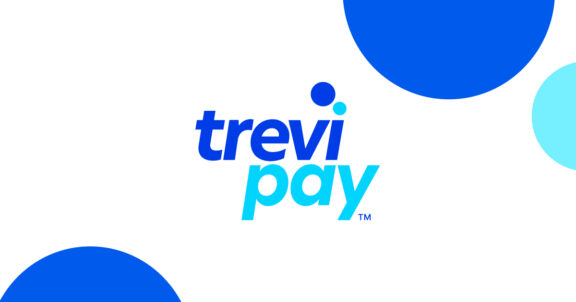A successful order-to-cash (O2C) process will end with a payment. Now, how you handle that payment matters. For B2B customers, applying cash to a specific invoice or transaction is crucial for on-time payments. The driving force behind this is the customer’s ERP or A/P system. These systems have safeguards to protect companies and track their spending.
How it works: An invoice is loaded into the A/P system, possibly routed for approval, coded for accounting purposes, and then paid. Most systems also have rules and safeguards in place to allow the invoice to be paid only once for an accurate A/P entry.
Applying cash using the first-in-first-out, or FIFO, methodology doesn’t work for most customers and will create reconciliation challenges when collecting from them. This may work for smaller customers. Even if you apply cash FIFO for smaller customers, be prepared to meet the challenge of cash application per the customer’s instructions.
Creating Exceptional Customer Experiences With Flawless Payment Processing
To provide the best customer experience as a supplier, when you receive this payment, it’s necessary to know where to apply the payment to keep your system in sync with your customer’s A/P system. As such, the customer will need to provide remittance advice to allow you to mark the proper A/R invoice or transaction as paid within your system. This is a complex process, and when you’re processing volume at scale, you have to pay attention to quality at the same time, or you’ll bump into a host of challenges.
Here’s what happens when you apply cash without properly addressing scale & quality:
- Purchasing power weakens due to delays in posting and applying payments, which, when applied, frees up the customer’s credit for new purchases.
- Customers’ trust and confidence erode over time, and as a result, they deem you challenging to do business with.
- The human power needed to apply cash properly will have a material impact on profitability.
Offering Flexible Payment Options Means Faster Cash
The first two challenges are getting the payment and the remittance advice or remit.
As far as how you receive payment, the more flexible you are, the more likely you’ll get paid on time and drive up orders. ACH, online payments, checks (primarily in the US) and even credit cards are all expected payment methods.
Now, retrieving remittance information is even trickier. The information might be included in the customer’s ACH instructions to the bank, somewhere on the check, or emailed directly to you when the payment is released. No matter where you find this information, the customer provides the required information to allow you to keep your system in sync with their A/P system.
As you know, you can receive remittances in numerous formats. Now, you just need to be able to consume the information. Sure, you can have people read the information and do the manual matching, but soon, you’ll be buried in work and have a growing team to keep up. Automating these processes is key to scaling with quality.
Digitizing Remits
At TreviPay, we use our CRM platform, Robotic Process Automation (RPA), and Optical Character Recognition (OCR) to extract information from remits and convert it into a consumable format.
This involves a two-step process:
Step #1 – Track.
We use the CRM platform to track incoming remits from customers or banks. If the customer provides a remit via email, the information may be contained within the body of the email or as an attachment. These attachments could be PDFs, Excel spreadsheets, Word documents or any flat file format.
If a payment has been identified that doesn’t have a remit, we’ve created a remit campaign to obtain this data. Our remit campaign consists of three automated emails reminding the customer to send the remit and where to email it. If, after three attempts the remit is still not received, then and only then will the payment be applied FIFO.
Step #2 – Extract.
Now, the information received in numerous formats must be extracted from the remits so the data can be loaded into your matching software. This is a complicated task that would require a lot of people power making it prime for automation.
TreviPay’s automation is a well-orchestrated process that uses three tools — CRM, RPA and OCR to maximize the data that can be extracted without human intervention. This automation needs to solve the various formats in which the data is received and the varying data by remit. Some remittances contain all the key fields, such as customer number, payment amount and invoice number, while others may only have the customer name and a PO number. At this point, extract everything possible and then perfect your matching rules to be able to consume whatever data is received.
Matching Payments
Now that the customer’s information is in a consumable format, the payments and data are automatically loaded into our proprietary matching tool. This tool uses sophisticated logic and machine learning to match the payments to the correct customer and accurate invoices/transactions. The matching logic is complex, can change over time and should include a matching confidence indicator.
Ideally, a large percentage of payments are auto-matched with high confidence to achieve scale and quality. Only the exceptions are handled by humans, who can see the possible matches and help make the determination using additional facts that can be trained into the model for the next time.
Additionally, you’ll need to consider flexibility around the payment amounts as part of your automation. Some customers may short-pay an invoice, others may combine multiple payments, or there may be rounding errors. Over time, these exceptions can become time-consuming and labor-intensive, so your automation should evolve to handle all the potential exceptions you could encounter.
Loyalty Begins at the Payment — for Both Customers and Employees
The complexities of cash application can be daunting, but when done with scale and quality, they significantly impact the customer experience and the internal team member experience. The customer will gravitate to your product or service because you’re easy to do business with, and your internal team members will feel valued by working on complex tasks rather than mundane, easy tasks.
Read our new guide “6 Ways to Bring Order to Your Order-to-Cash”







